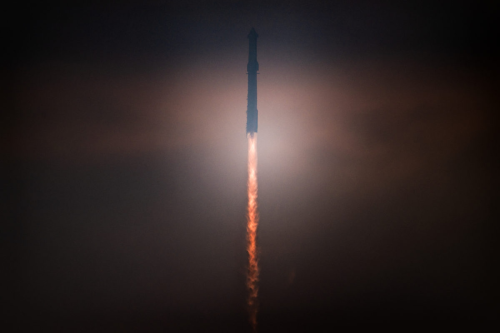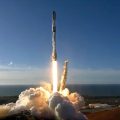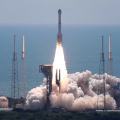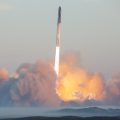
SpaceX’s Starship rocket successfully launched from Texas on Thursday, marking the fourth test flight for the spacecraft that NASA and Elon Musk hope will transport humanity to the moon and Mars.
The world’s largest and most powerful rocket, standing nearly 400 feet (121 meters) tall, soared above the Gulf of Mexico, embarking on a planned hourlong flight. The spacecraft on top aimed for a half-lap around the planet, concluding with a splashdown in the Indian Ocean.
A Major Milestone Achieved
This time, SpaceX focused on controlling the descents to avoid previous mishaps. Minutes after the Thursday morning liftoff, the first-stage booster separated from the spacecraft and splashed into the gulf as planned, after firing its engines.
“And we have splashdown!” announced SpaceX launch commentator Kate Tice from Mission Control at company headquarters in California. This milestone is crucial for SpaceX’s long-term goal of returning Starship’s Super Heavy booster to its launch site for reuse.
Overcoming Previous Setbacks
Earlier attempts saw varied challenges. In March, SpaceX nearly succeeded but lost contact with the spacecraft, leading to an explosion. Last year’s two test flights ended in explosions shortly after liftoff from Boca Chica Beach, Texas, causing significant damage to the launch pad and surrounding area.
To improve the odds for this fourth attempt, SpaceX upgraded the software and made changes to the rocket’s flyback system. The Federal Aviation Administration (FAA) approved this test on Tuesday, confirming all safety requirements had been met.
Fully Reusable Design
The Starship is designed to be fully reusable, which is why controlling the booster’s entry into the gulf and the spacecraft’s descent into the Indian Ocean is vital. Thursday’s flight served as practice for future landings, although nothing was recovered from this mission.
NASA has contracted SpaceX for two moon-landing missions using Starship, scheduled for later this decade. Astronauts will use NASA’s rocket and capsule to leave Earth and then transfer to Starship in lunar orbit for the descent to the moon’s surface.
Tourist and Future Mars Missions
SpaceX is also planning tourist trips around the moon. However, the first private lunar customer, a Japanese tycoon, recently withdrew from the trip with his entourage due to delays.
Elon Musk envisions even grander plans: fleets of Starships launching people and infrastructure to build a city on Mars.
Disclaimer: The information presented in this article is based on current events and data available at the time of publication to the best of our research and knowledge. It is intended for educational and informational purposes only and should not be construed as professional advice or financial advice or sportsbetting advice or life advice. It is simply our best guess. We at Las Vegas Top Picks do our best to get stories accurate, but sometimes mistakes happen, and it is always good to double-check other sources and media outlets to confirm stories and factual details. The opinions expressed in this article do not necessarily reflect the overall opinion of Las Vegas Top Picks.








